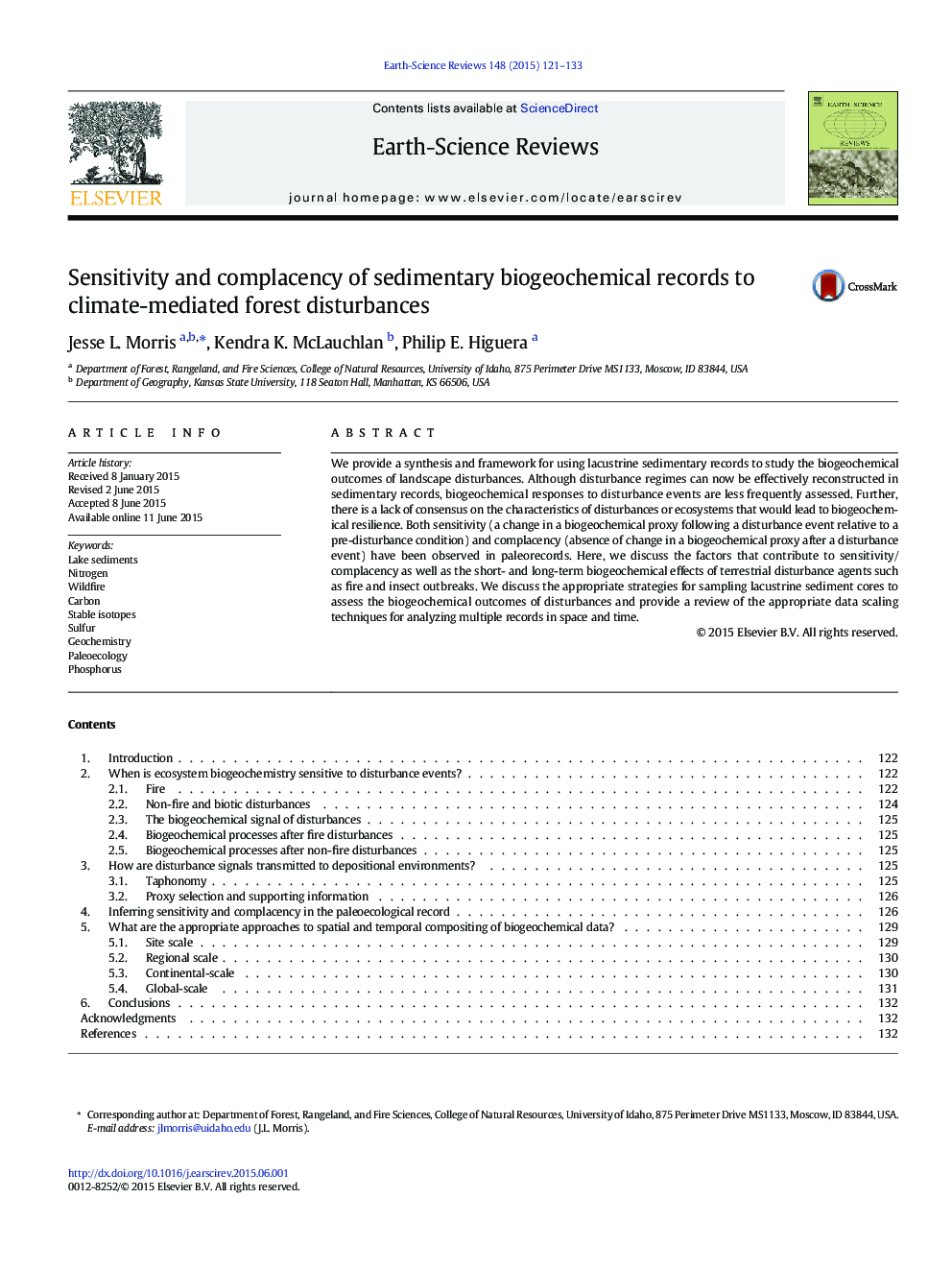| Article ID | Journal | Published Year | Pages | File Type |
|---|---|---|---|---|
| 4725647 | Earth-Science Reviews | 2015 | 13 Pages |
We provide a synthesis and framework for using lacustrine sedimentary records to study the biogeochemical outcomes of landscape disturbances. Although disturbance regimes can now be effectively reconstructed in sedimentary records, biogeochemical responses to disturbance events are less frequently assessed. Further, there is a lack of consensus on the characteristics of disturbances or ecosystems that would lead to biogeochemical resilience. Both sensitivity (a change in a biogeochemical proxy following a disturbance event relative to a pre-disturbance condition) and complacency (absence of change in a biogeochemical proxy after a disturbance event) have been observed in paleorecords. Here, we discuss the factors that contribute to sensitivity/complacency as well as the short- and long-term biogeochemical effects of terrestrial disturbance agents such as fire and insect outbreaks. We discuss the appropriate strategies for sampling lacustrine sediment cores to assess the biogeochemical outcomes of disturbances and provide a review of the appropriate data scaling techniques for analyzing multiple records in space and time.
